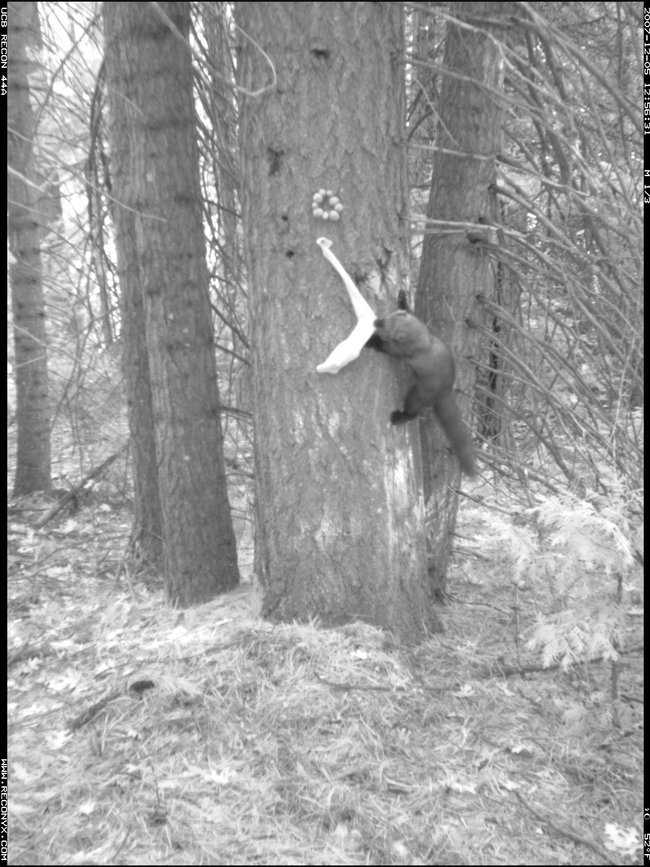
Pacific fishers aren't well-known in California. "They're very elusive," says Rick Sweitzer, a fisher researcher at UC Berkeley. "Most people have never seen a fisher because they spend most of their time in the trees." The dark-brown mammals are closely related to weasels.
Fishers once ranged throughout the Sierra Nevada, but their numbers have declined dramatically. Trappers caught them for their fur until it was outlawed in 1946. Clear-cutting drastically reduced the old-growth forests they favor. Now, fishers exist in two isolated populations in the northern and southern Sierras. Sweitzer studies the population south of Yosemite.
Since fishers aren't easy to find, Sweitzer documents them with 500 motion-activated cameras. He attracts them by hanging a meat-filled sock from a tree. "It takes them a little bit of time to chew the sock apart to get at the meat, so we get a lot of photographs."
Sweitzer goes through 2,000 socks a year, so he decided to get the public involved. He's asking for donations of gently-used socks.
"My real motivation for this sock drive is so that I don't have to stand in line at Walmart with two or three cartloads full of all the socks I can find. I get a lot of stares and a lot of interesting questions."
The US Fish and Wildlife Service is currently considering whether the Pacific fisher will be listed under the Endangered Species Act, in response to a lawsuit filed by environmental groups. A group of fishers was released earlier this year near Chico in the hope that the animal will return to its historic range.
If you have socks to spare, you can mail them to the Sierra Nevada Adaptive Management Project at this address:
40799 Elliott Drive
Oakhurst, CA 93644